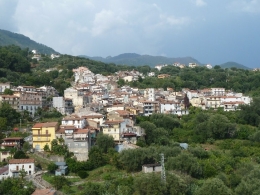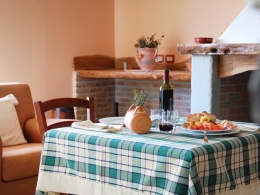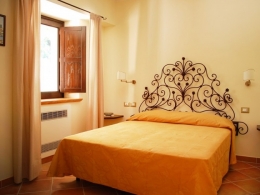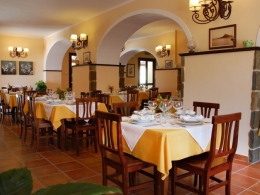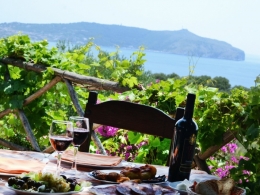Futani e Eremiti
The name Futani may derive from the Greek futon, meaning plant, forest, probably due to the dense woods that once covered the area where the town developed. In the 18th century, indeed, the historian Antonini describes:
just over half a mile from the river Rubicante, in a small valley is a small hamlet called Futani, with fertile ground, and amount of oak.
The origin of Futani is dated around the 11th century with the first settlement called Vicolo S.Antonio.
Futani and the hamlets Castinatelli and Eremiti owe their origin to the work of the
Basilian monks; the Convent of Santa Cecilia testifies to their presence here.
The first document about the town dates back to 1247 when Futani is mentioned in a legal document as a property of the State of Cuccaro Vetere. In 1806 Futani became a municipality, thanks to the new administrative organization of Cilento area Gioacchino Murat had promoted.
Futani has a religious appeal
The village is located near the Sacred Trail, one of the paths to the shrine on Mount Gelbison. The highest shrine in Italy, Madonna del Sacro Monte, pilgrim destination since the Middle Ages, was founded at the beginning the 10th century by Italo-Greek Monks.
The pilgrimage period starts from the last week of May until the first week of October. The Shrine is visited by faithful from all Southern Italy, so along the path are several stages where one can rest or gather and continue climbing the mountain. Although the difference in altitude of 1275 m (if you start from Futani), the climbing is accessible to everybody.
The pilgrimage starts from the Church of San Marco Evangelista where is kept a font, described in 1747 by historian Antonini. The climbing to the Sacred Mount is interesting from historical, naturalistic and anthropological point of view. For example, the so-called “craparizi” (a dialect word) -hospitals for grazing animals - in località Liepari: dry-stone walls covered with wooden structures made by shepherds, are traces of the sheep-farming that has characterized the area since ancient times. Climbing to Monte Gelbison means also enjoy the scent of oregano and wild strawberries, wild thyme, hyacinths and rosa canina (dog-rose), while the golden brooms break the monotony of the green ferns.
Arrived at Scanno D'Aniello you can admire a unique rural building: a nevèra -icehouse. It is a characteristic hole dug and built on top of the mountain, strategically facing the northern side, where snow was collected in winter and used in summer.
How appropriate is the name given to the hill that lies on the path of pilgrims or tourist: Monte Scuro (Mount Dark): the dense vegetation stops also the most overpowering sunlight whereas the trees and the undergrowth form a maze.
If the pilgrims were a betrothed couple they couldn't escape the rite of Preta ‘mpuntillata , which consisted in the installation of a piece of wood as a support of a cliff: it was a wish for a solid marriage.
Vallo della Lucania - Angellara
30' to the seaside
From € 48,00
B&B / a pers.



 Sito web: nd
Sito web: nd